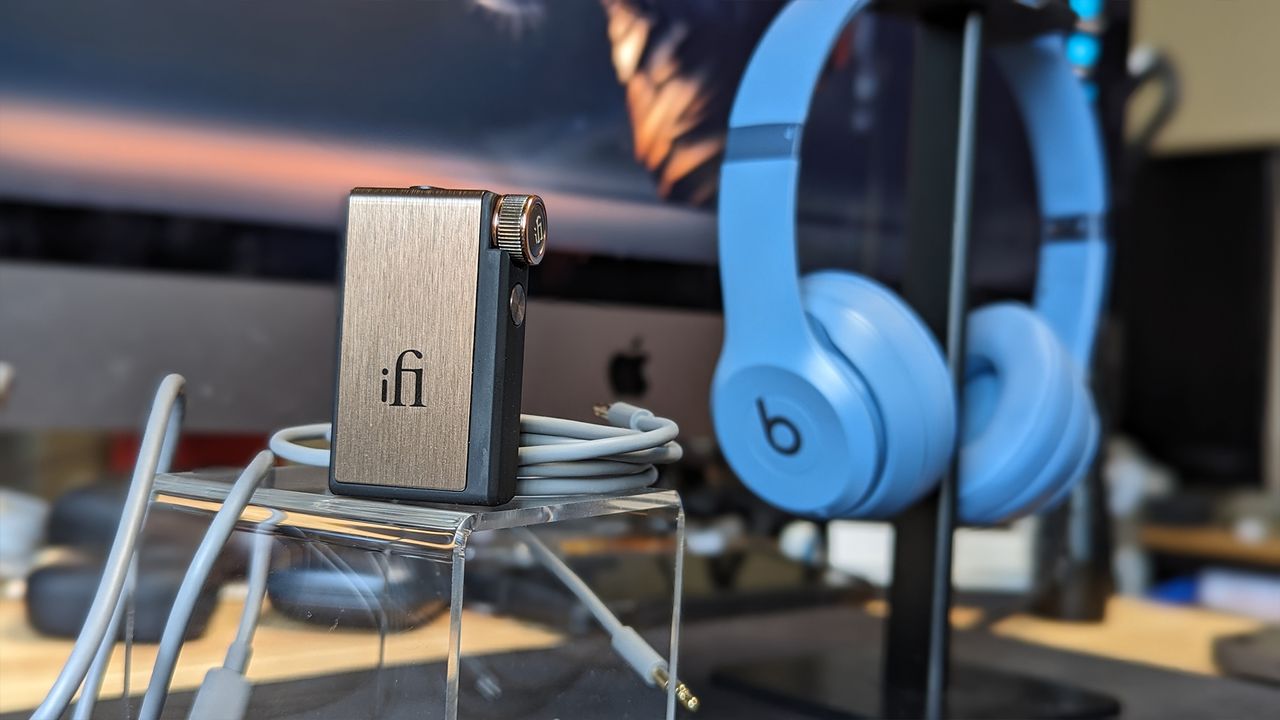
Great googa mooga, this DAC/Amp is impressive! It’s beautiful on the outside, feature-packed on the inside, and has some EQ presets that liven up the party when you want. iFi Audio makes great audio kit, but they’ve outdone themselves with this one, and it will grow with you. It can be updated over the air with new Bluetooth codecs as they become available. This one’s a no-brainer—almost.
iFi GO blu: Price and availability
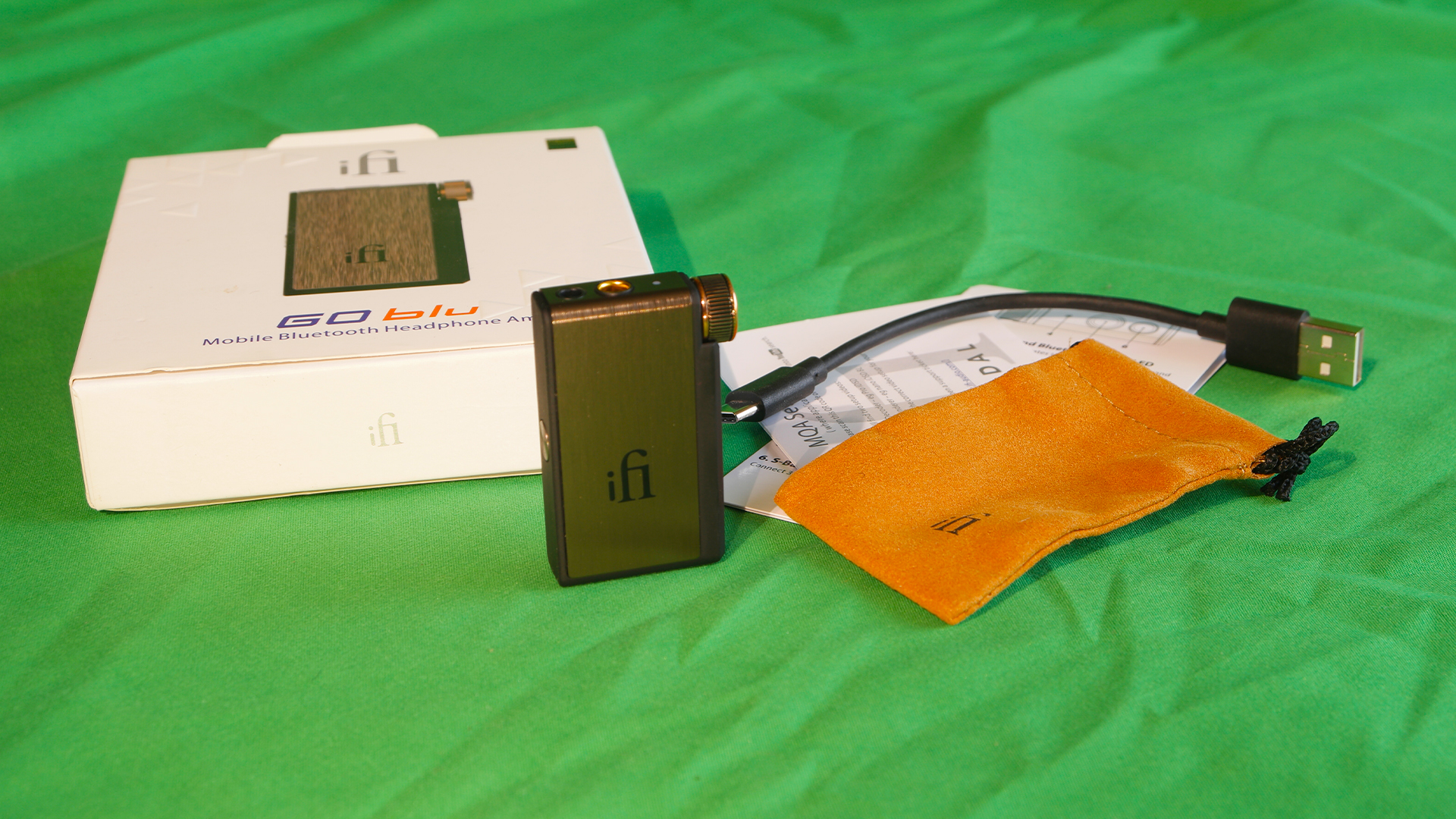
You can pick up the iFi GO blu for $200 direct from ifi-audio.com, or Amazon. I’d also consider picking up the $29 GO blue case with a clip from ifi-audio.com. The case makes it easier to use with your headphones by clipping them to your shirt so the microphone is closer to your mouth when you take calls.
iFi GO blu: Build and fit
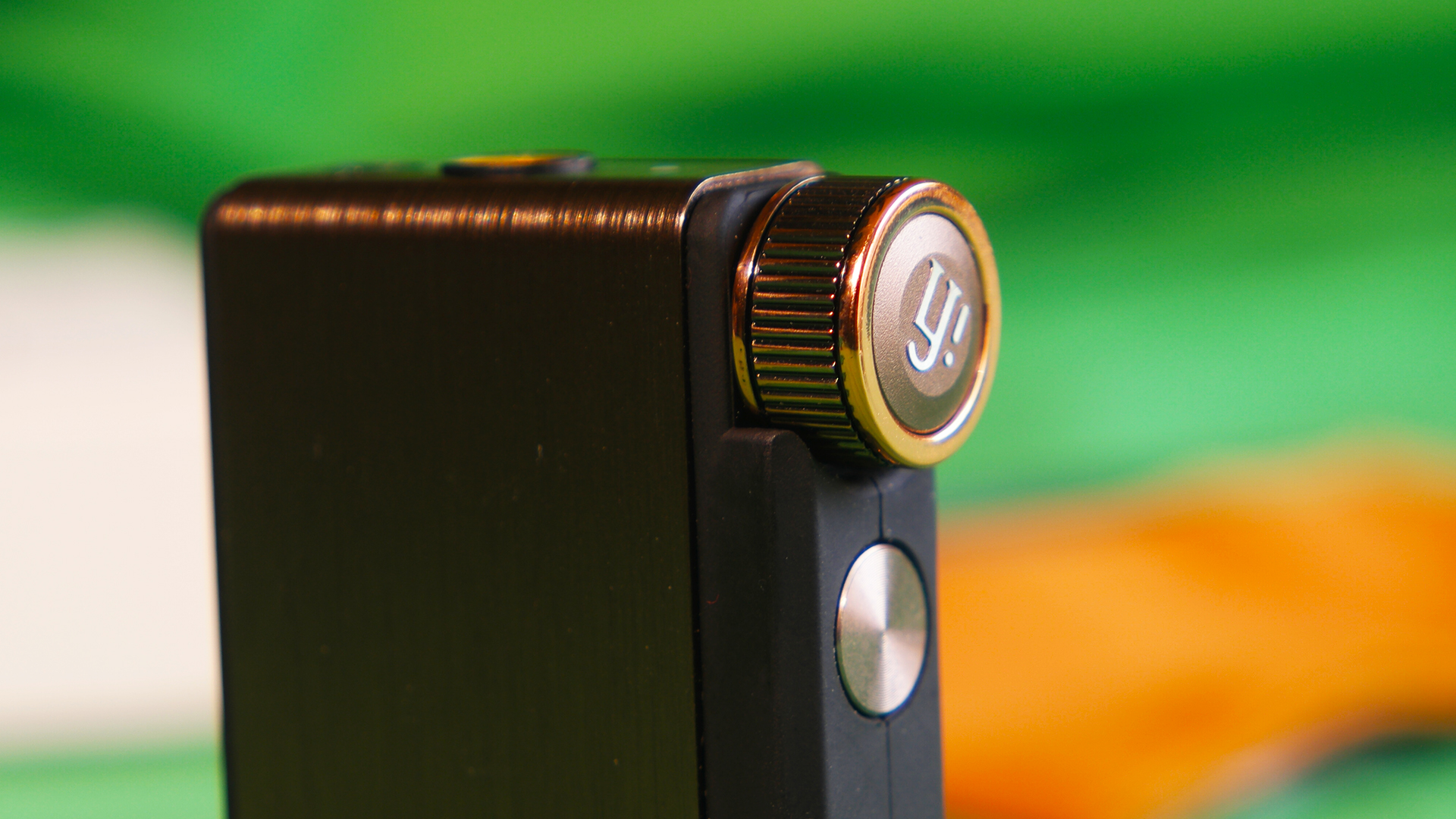
Next to the Qudelix-5K, this is one of the smallest DAC/Amps on the market to pack this level of sophistication and features. It’s the size of a 9V battery. The unit’s exterior is wrapped in a soft-touch polymer with copper-colored trim. On the right side of the GO Blu is where you’ll find a luxurious infinitely scrolling ChronoDial, which gives you fine analog volume control and handles playback and phone functions with various clicks. Below that is the button that controls EQ preset modes, Bluetooth pairing, voice alert functions, digital filter mode, and factory reset.
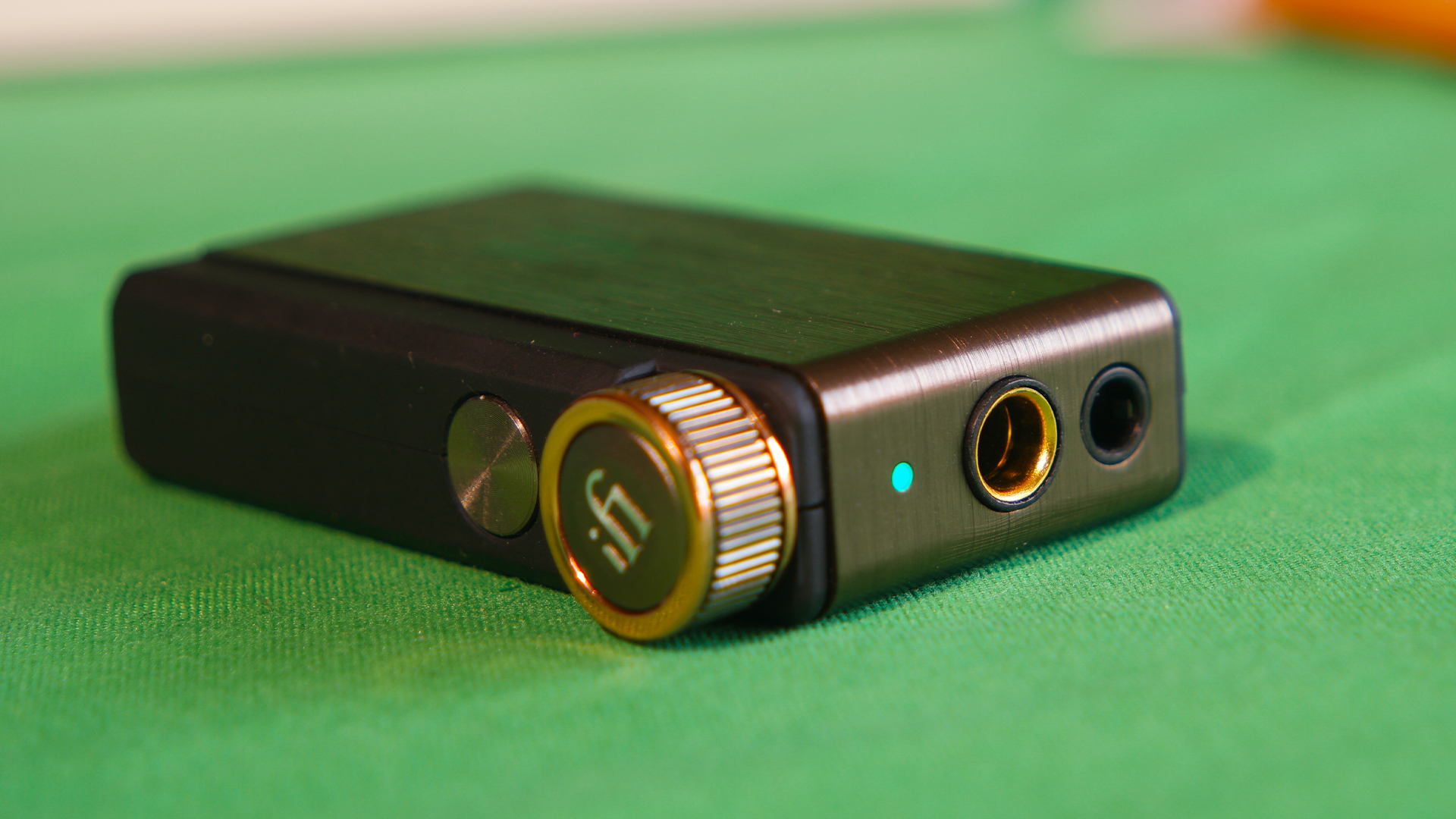
On the top, you’ll find an LED that tells you which EQ preset you’re using, Bluetooth connection, and digital filter status. Next to that are the balanced 4.4mm and S-Balanced 3.5mm headphone outputs. On the bottom, there’s an LED for battery status, a microphone, a factory reset pinhole, and USB input, which supports charging and audio playback up to 24bit/96kHz.
The power button is on the left side. Press it twice to hear which Bluetooth format you’re currently receiving. You’ll also use this button in conjunction with the button under the dial to turn on/off voice announcements.
This powerful device is incredibly small and light but has a delightful in-hand feel thanks to the soft-touch plastic. The buttons all give satisfying clicks, and the USB-C port has no play as you plug in and pull cables out. A refined touch is the labels on the rear etched next to all of the buttons, telling you what they do so you don’t have to remember all the things. They do a lot!
iFi GO blu: Features
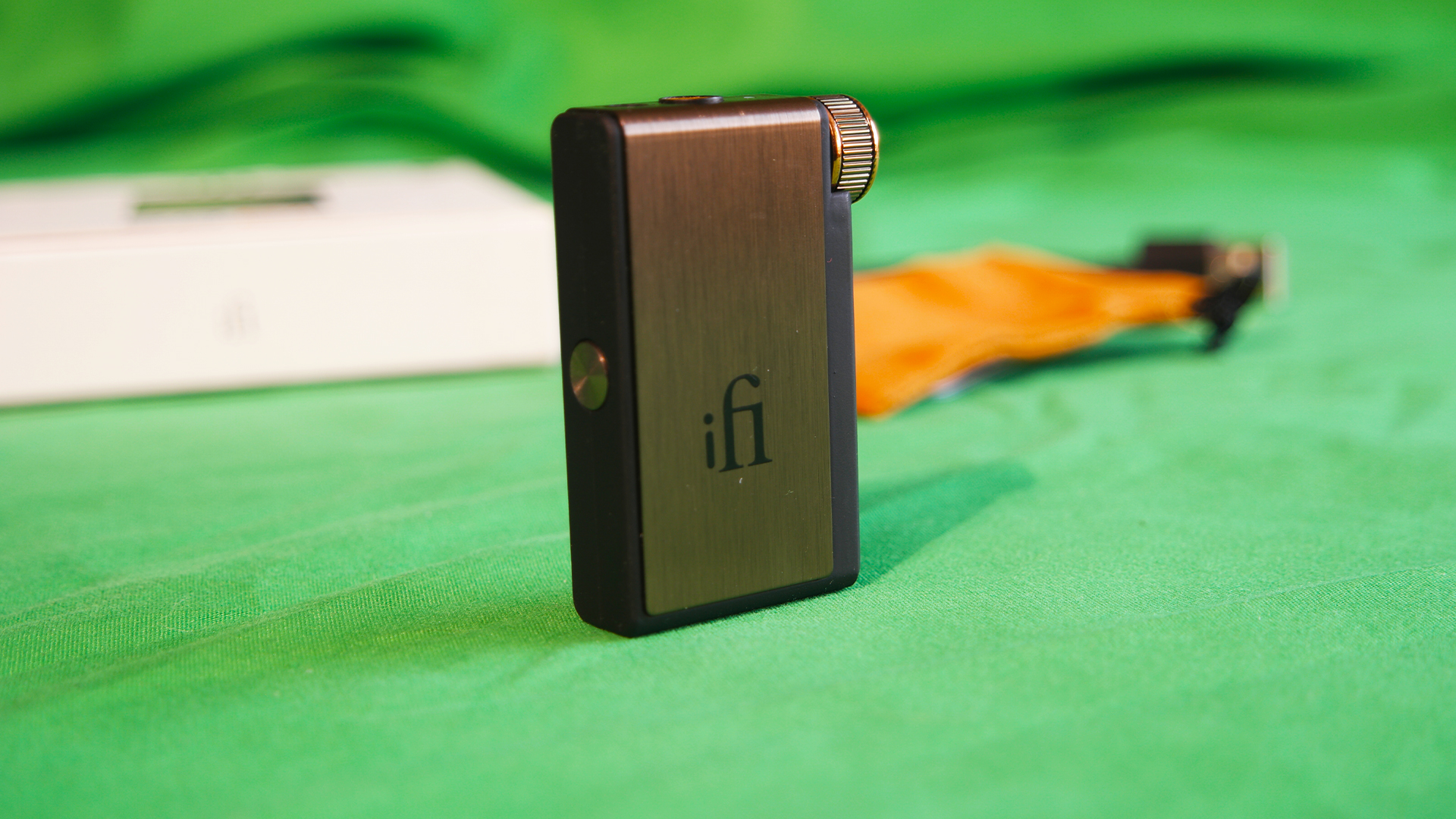
We touched on hardware features as we talked about build quality and fit, so let’s discuss what some of those features do in a bit more detail. The GO Blu comes with three presets: XBass, XSpace, and XBass + XSpace. The first two boost bass and expand the soundstage, respectively. The third is a combo of both. As a bass lover, I’d like to have more control over how much the bass is boosted, but for most, it will give an appreciable bump that doesn’t overpower the rest of the mix
The 3.5mm output features balanced circuits instead of the single-ended circuit approach traditionally used in most products around this price point. This reduces noise, giving you clearer sound.
The GO Blu uses Qualcomm’s QCC5100 chip, in conjunction with the Cirrus Logic 43131, supporting aptX Adaptive/HD/LL, LDAC, LHDC, AAC, and SBC with the ability to be updated over the air to add newer codecs. Because the GO blu is calling enabled and uses that QCC chip, you also get active noise canceling with those mics so that you can use traditional IEMs or headphones during your commute or in the office and have the ability to take and make calls with minimal interruption to your listening flow. Pick up the GO blu case with a clip so you can clip it to your shirt and make hands-free calling even easier.
I haven’t worn the battery down yet, but it gets me through an entire workday and is rated for ten hours. A high-powered charger (6.3v) can recharge the GO blu in 40 minutes.
iFi GO blu: Sound quality
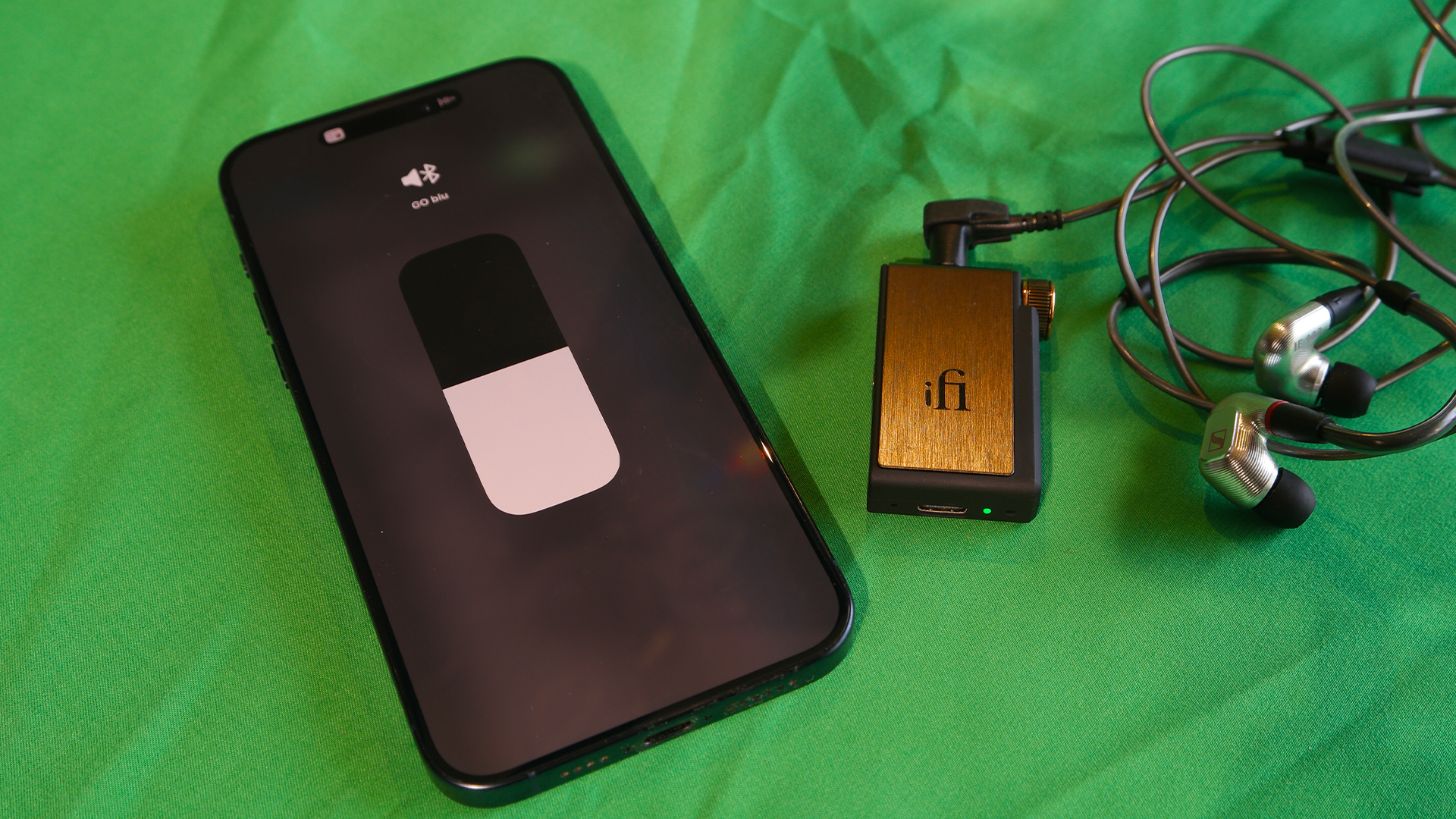
So, with all of this technology packed in such a small space, how does it sound? I’ve listened through both the 3.5mm and 4.4mm ports, utilizing both Bluetooth and wired USB-C audio sources, and I’ll tell you that the output from this DAC/Amp is an elevated experience. I tested audio quality with sensitive and hard-to-drive IEMs from 1MORE, Campfire Audio, and Sennheiser’s IE900. For headphones, I did the same, using Sennheiser and HiFiMan planar magnetic over-ear headphones.
Knowing that the iPhone only supports AAC, I wanted to hear what the GO blu could do with one of the Hi-Res codecs. In this case, LDAC connected to a Pixel 7 Pro, and both codecs were a delight. The LDAC stream offers more dynamics, but iPhone owners won’t feel left out, as the sonic imaging is still quite nice via AAC.
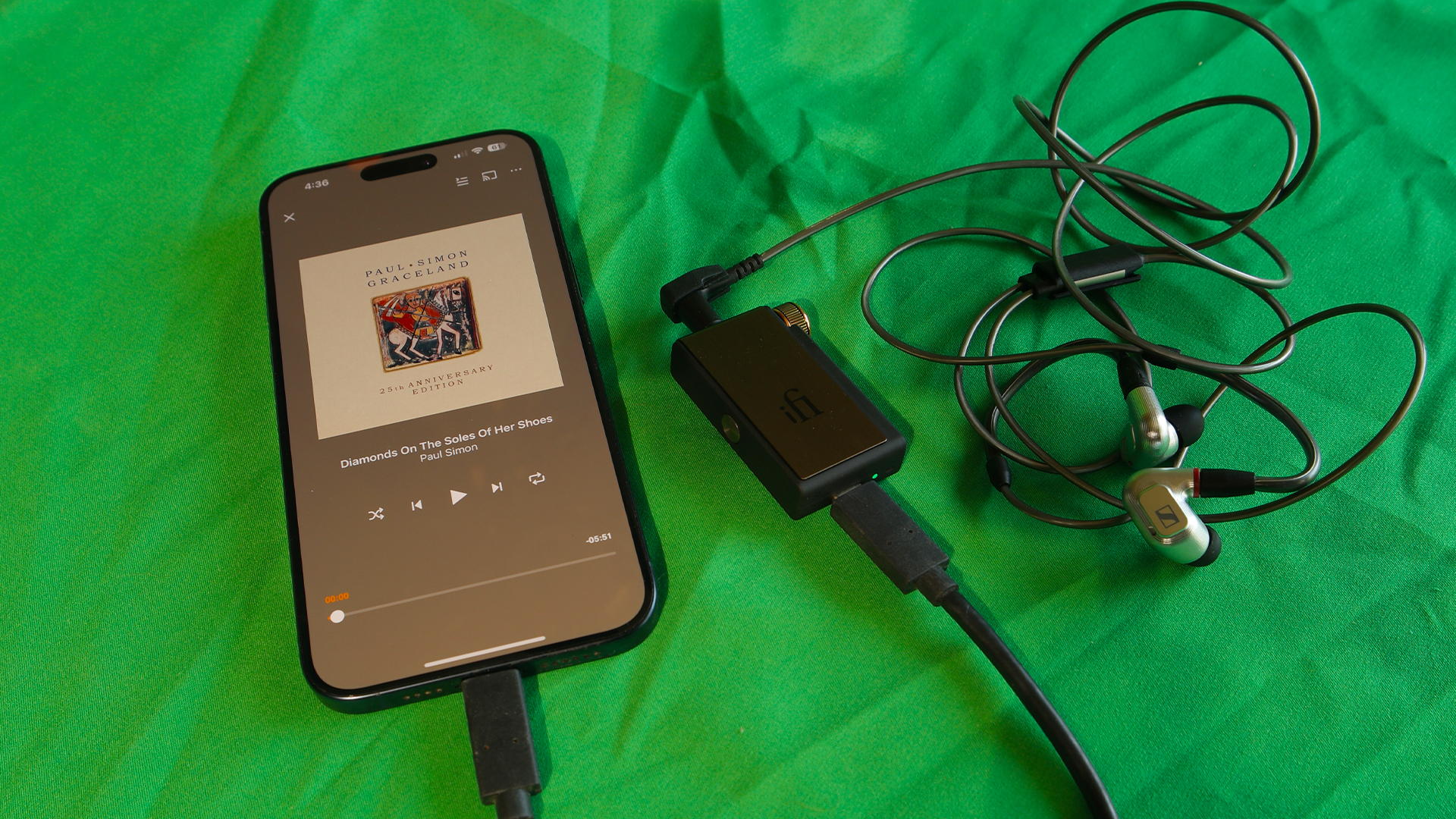
The wired connection, giving you access to Apple Music lossless audio, is transcendent. Paul Simon’s “Diamonds on the Souls of Her Shoes,” and the main title track from the “Get Out” film’s soundtrack, Michael Abels’ haunting “Sikiliza Kwa Wahenga” were both ethereal experiences for their large, open soundstage. With the right pairing, the imaging with the iFi GO blu is highly analytical, allowing you to lose yourself in the nuances of the music you’re listening to. Paired to headphones or IEMs which aren’t very analytical themselves, you still get impressive clarity and nuance.
The overall sound signature is very balanced and neutral, which is why I’m thankful for the XBass feature. Getting that bump in the low end made hip-hop tracks that much more enjoyable when I connected the 4.4mm cables of Sennheiser’s IE900, which itself has a very neutral sound. The Go blu really gives you bright, sparkly upper mid, and high-frequency reproduction without being sibilant or harsh. The entire listening experience is smooth without compromising instrument attack or nuance, and I never had to crank my phone’s volume past 75%. Most of the time, I listened at highly satisfying levels with the slider up to around 50%.
iFi GO blu: Competiton
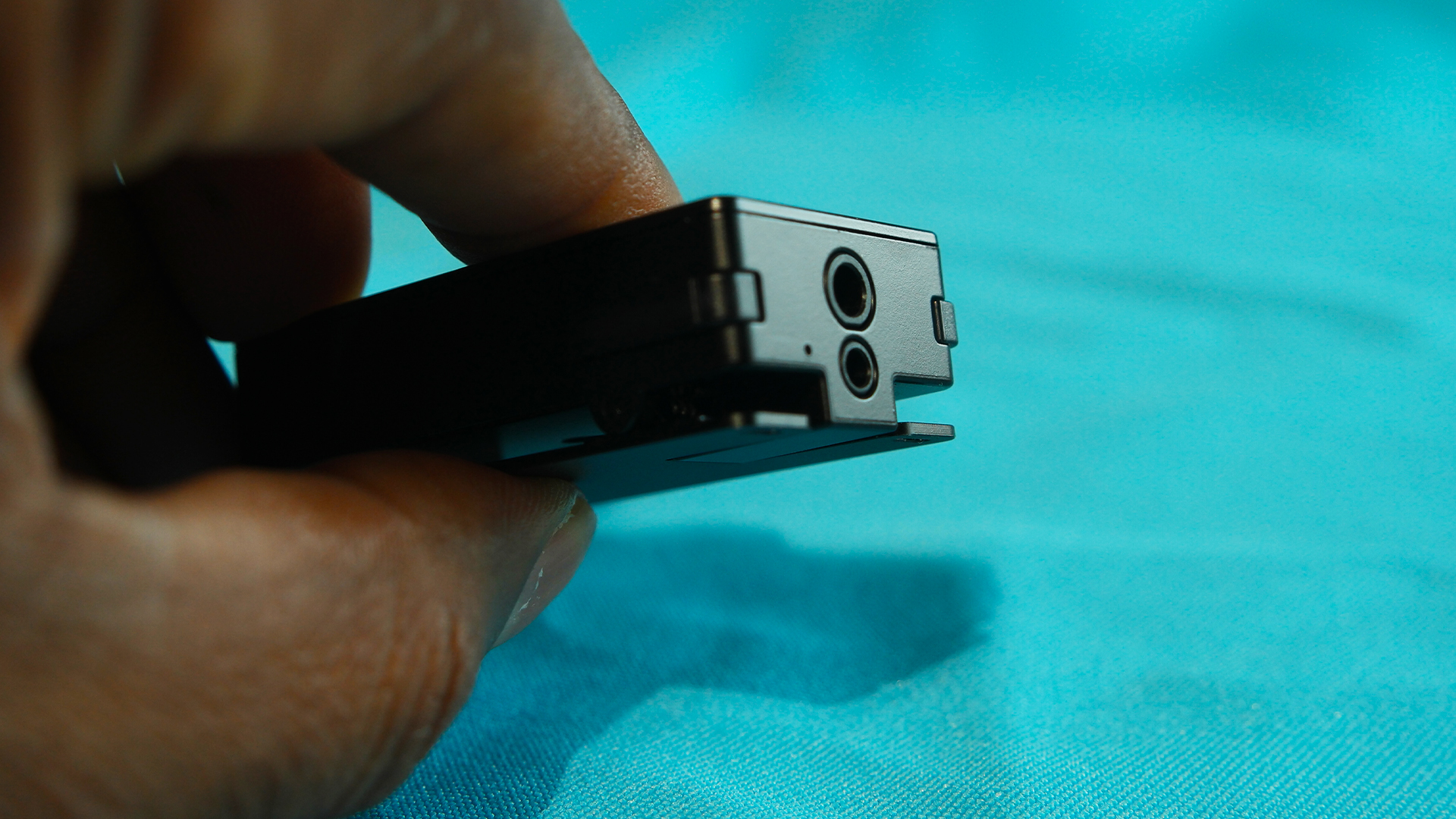
Interestingly, iFi’s own Zen DAC 3 is at the same price point, but that DAC is larger and more tailored toward a desktop experience with its available 5V Dc input. Then, you’ll want to look at the FiiO BTR7. It has similar features, but no mics for calling, and a bit less battery life. It does, however have a companion app with parametric EQ, which the GO blu doesn’t.
Quedelix 5k is $100 cheaper and while it doesn’t quite have as expansive a soundstage, it is definitely a very capable Bluetooth/USB-C DAC/Amp and has microphones for calling. Add to that it’s insanely impressive companion app with robust parametric EQ settings and it becomes a very tempting competitor. I’ve purchased the Quedelix 5k for my personal use, but I will be buying the GO blu at some point as well.
iFi GO blu: Should you buy it?
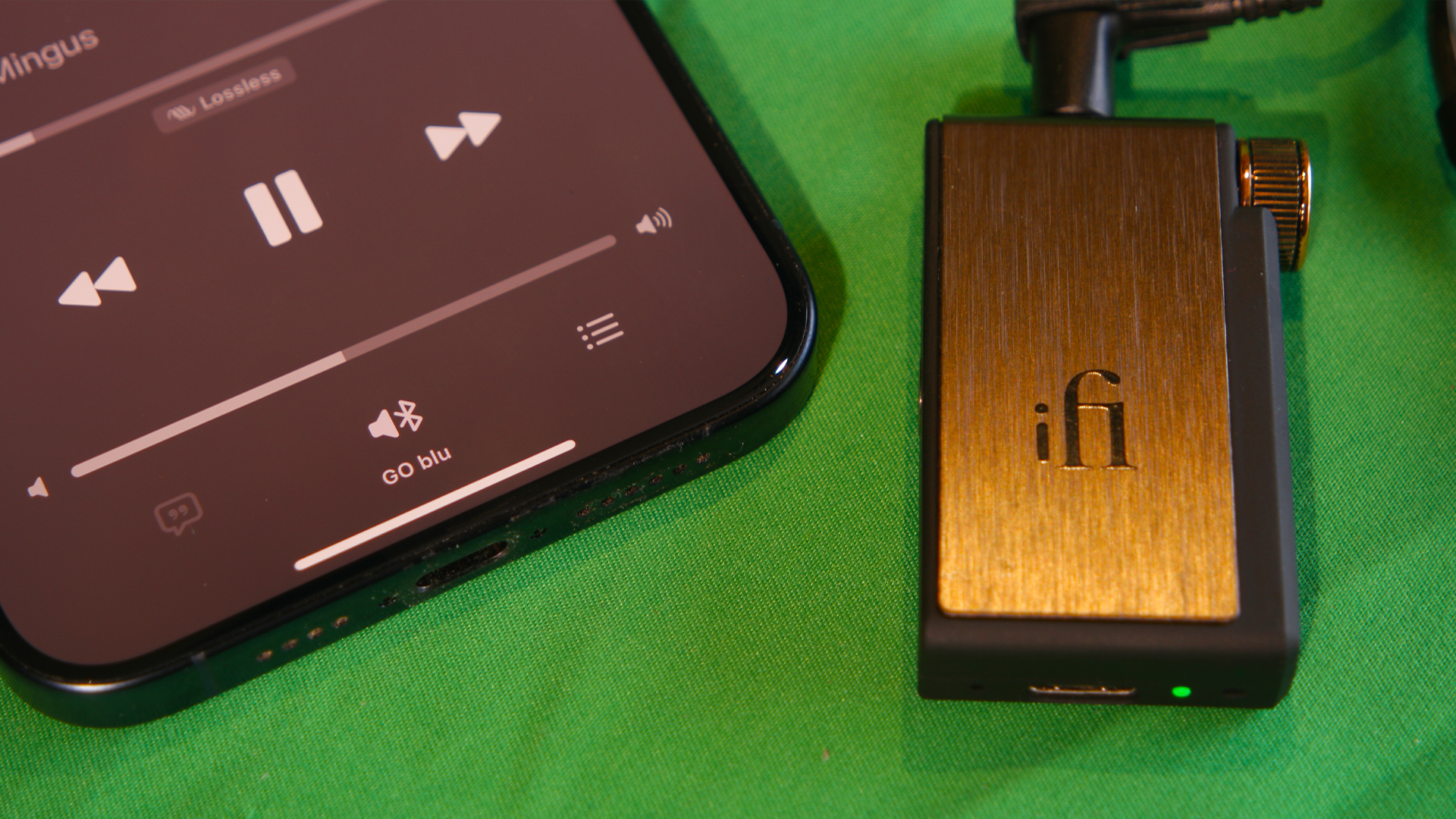
You should buy the iFi GO blu if...
- You want a great multi-source DAC/Amp
- You want superb sound at a fair price
- You want enough battery life to get through a workday
You shouldn't buy the iFi GO blu if...
- You want PEQ
- Money is tight
A powerfully versatile DAC/Amp
The iFi GO blu Bluetooth DAC/Amp has a soundstage and clarity that sound like your music is radiating from the heavens. Best part? Audiophile quality at a fair price!







